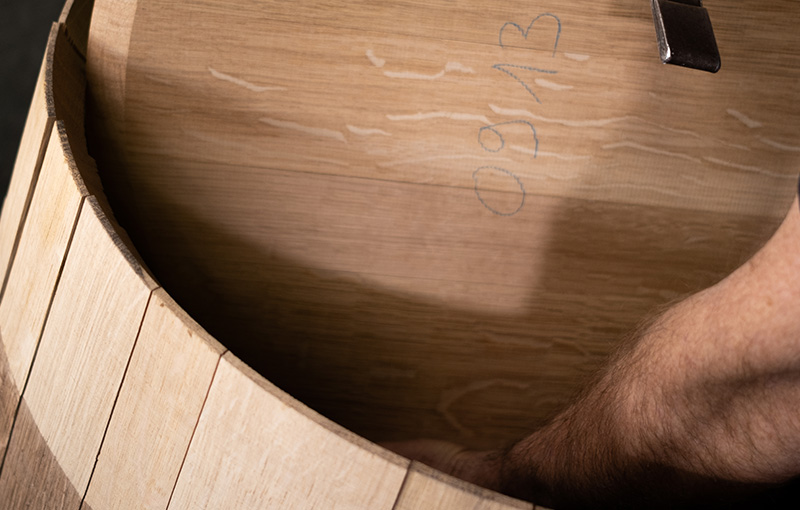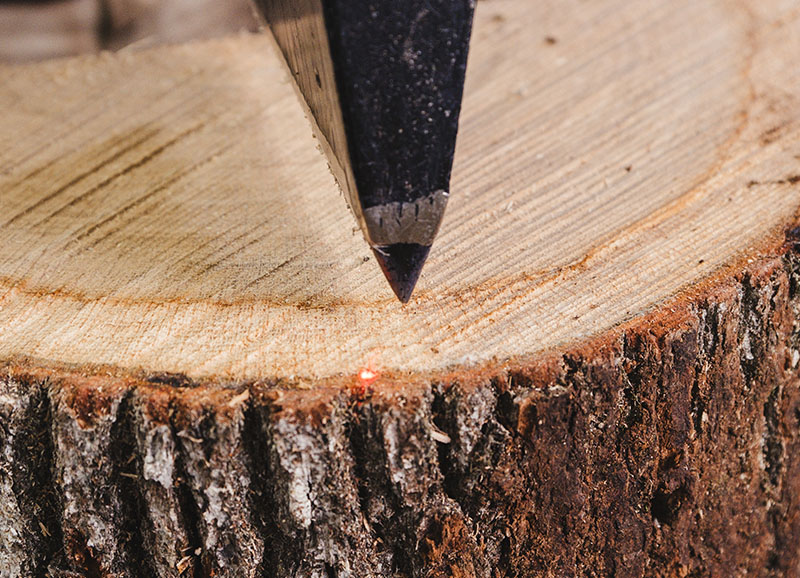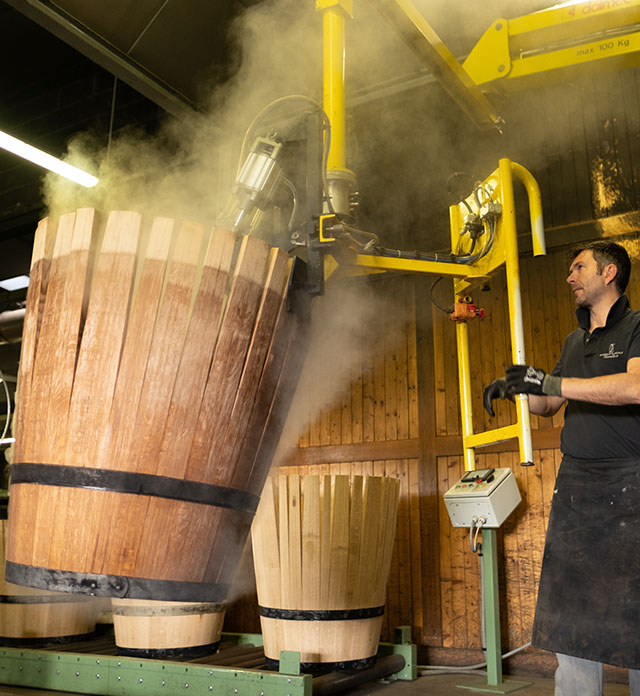Home page / Our expertise
Our expertise
Dargaud et Jaeglé, a unique expertise!
Since its creation, Dargaud & Jaeglé has always upheld the belief that maturing in oak barrels should be done with the greatest respect for the fruit, the terroir, and the art of the winemaker.
Its continually improved original technique supports this philosophy, providing a delicate and precise oak influence.

It all starts
with wood…
The selection
DARGAUD JAEGLÉ does not split stave nor buy logs or standing trees. as it is easier to determine the quality of the oak once it has been cut rather than when it is still standing or in logs.
DARGAUD JAEGLÉ barrels are made from two species of oak whose characteristics are compatible with wine: pedunculate oak and sessile oak.
Therefore, we have selected a range of suppliers for their professionalism and their ability to direct each part of the tree to the appropriate industry.

Thus, only wood with the required characteristics will be used for staves, as not all parts of the same tree are suitable for stave making.
DARGAUD & JAEGLÉ has built very close relationships with its stave mill partners. The strict quality specifications it sets, ensures a sustainable relationship throughout the year.
Choosing the volumes to purchase in each forest region is a delicate exercise, requiring a precise understanding of both current and future needs.
Felling
Professional loggers carry out the first felling of trees under the supervision of the National Forest Office, which requires the forest to be treated with great care: trees can only be felled between October and April (when sap is on the ground), and there is a strict prohibition against trampling or damaging the young oak seedlings that will form the forest in 150 years.
To ensure watertightness, French oak, due to its porous texture, must be split to produce stave.
The advantages of staves:
Watertightness
Sturdiness
Bendability
Dimensional stability
Slow diffusion of oxygen into the wine
Slow diffusion of extractable compounds
Seasoning
Each delivery of staves undergoes a visual inspection for conformity, checking dimensions, volume, and quality.
The staves are then stacked in the open air in our seasoning yard, allowing the beneficial effects of the sun, rain, and wind, to aid in the wood’s maturation.
After this open-air aging process, the wood is put in a kiln to achieve a moisture content between 15 and 17% making it ready for use in the cellar.
And the story continues in our hands…

Bending
Since its founding, DARGAUD & JAEGLÉ has used the technique of bending staves with boiling water,commonly referred to as Water Bent.
This traditional method, used by Mâconnais coopers, offers multiple advantages:
-
- Greater flexibility of the staves
- Softening of the tannins.
During our toasting process, this technique allows for:
- A deeper toast penetration
- Protection against carbonization of the wood fibers during toasting
Although the main principle has remained the same since the company’s inception, the technique for bending staves with boiling water has evolved considerably, and now involves:
-
- a water dechlorination system,
- A high-efficiency submerged burner,
- A temperature control system.
Toasting
Taking advantage of the heat and humidity created during the bending process, the barrels are toasted over oak fueled braziers.
This slow, deep, and non-charring toasting process is adjusted according to customer requests and is constantly monitored with infrared thermometry.